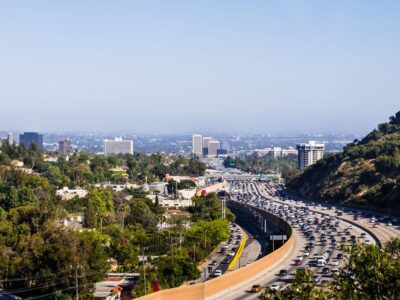California Sets 2030 Climate Emissions Target
And it looks like the right goal
Today, California Governor Jerry Brown signed an executive order setting a statewide greenhouse gas emissions target to be achieved by 2030, at 40% below 1990 levels. It’s an historic announcement that puts California in the vanguard of jurisdictions who have committed to goals in this 2030 timeframe (it matches the E.U.’s). California’s new 2030 target takes its place alongside, and fits nicely with, the state’s existing 2020 and 2050 goals, which were set, respectively, by the Legislature in AB 32 and by Governor Schwarzenegger in an executive order targeting reductions of 80% below 1990 levels by midcentury.
Governor Brown’s target looks like the right one, both robust and achievable. Assuming our statewide emissions will be roughly at 1990 levels in 2020, as required by AB 32, this order calls for reductions of a further 40% in the decade thereafter. It’s an aggressive target, but one that is supported by the recent analysis of mid-term targets undertaken by E3 for the state. That study examined emissions reduction scenarios between now and 2050, looking carefully at the feasibility of particular mid-term targets. It found that reductions of roughly 40% below 1990 levels by 2030 (it focused on 38%) could be achieved through a “suite of low-carbon technologies including energy efficiency, building electrification, renewable energy, zero emission vehicles, and renewable liquid fuels,” and, notably, could feasibly “rely on existing technologies.” It also found that this scenario was consistent with “a continuation of current lifestyles and economic growth.” Moreover, getting to roughly 40% reductions by 2030 calls for faster progress toward our midcentury goals than some less-aggressive midterm targets would have, relying earlier and more heavily on renewable electricity and near-term measures with air quality benefits, including zero emission vehicles and electric heat pumps. (Read the study summary here.)
Governor Brown’s target is also consistent with the current Legislative effort to codify the 2050 GHG goal. Senator Pavley has expressed strong support for the new E.O. and has told the L.A. Times that she intends to amend her S.B. 32 bill to enshrine the 2040 target, too.
Also worthy of note: The E.O. includes significant adaptation measures. Whereas California has been a leader on climate mitigation efforts, it has arguably lagged on adaptation. This may change the tide. The E.O. requires, among other things, that the state’s five-year infrastructure plan take climate change into account and prioritize natural infrastructure solutions; that the state’s planning and investment decisions account for climate change impacts; and that the Natural Resources Agency update the state’s climate adaptation strategy every three years and “ensure that its provisions are fully implemented.” My fellow bloggers may have more to say on all of this.
Overall, a good day at the office for Governor Brown.
Reader Comments
2 Replies to “California Sets 2030 Climate Emissions Target”
Comments are closed.





Enshrine the 2040 target?
Today, bqrq signed an agreement setting personal greenhouse gas emissions target to be achieved by 2030, at 50% below 1990 levels. It’s an historic announcement that puts bqrq in the vanguard of those who have committed to goals in this 2030 timeframe (it matches the E.U.’s). Bqrq’s new 2030 target takes its place alongside, and fits nicely with California’s existing 2020 and 2050 goals,